Discover 9 Incredible Benefits of Audiobooks in the Classroom
Uncover the perks of using audiobooks in the classroom through a Montessori lens.
With over a decade of teaching experience in a Montessori upper elementary classroom, I’m here to share some unexpected benefits of using audiobooks with children in the second plane of development.
Discover how integrating audiobooks into your classroom enhances students engagement as a dynamic vocabulary development activity. And while audiobooks are a great teaching tool for the classroom, they’re also a summer reading activity that elementary kids enjoy.
Make sure to check out our list of recommended audiobooks for elementary learners at the end of this article!
What are Audiobooks
Audiobooks are narrated versions of printed books, transforming written content into an auditory experience. With the rise of digital platforms, audiobooks have become widely accessible, allowing people to enjoy literature through spoken words.
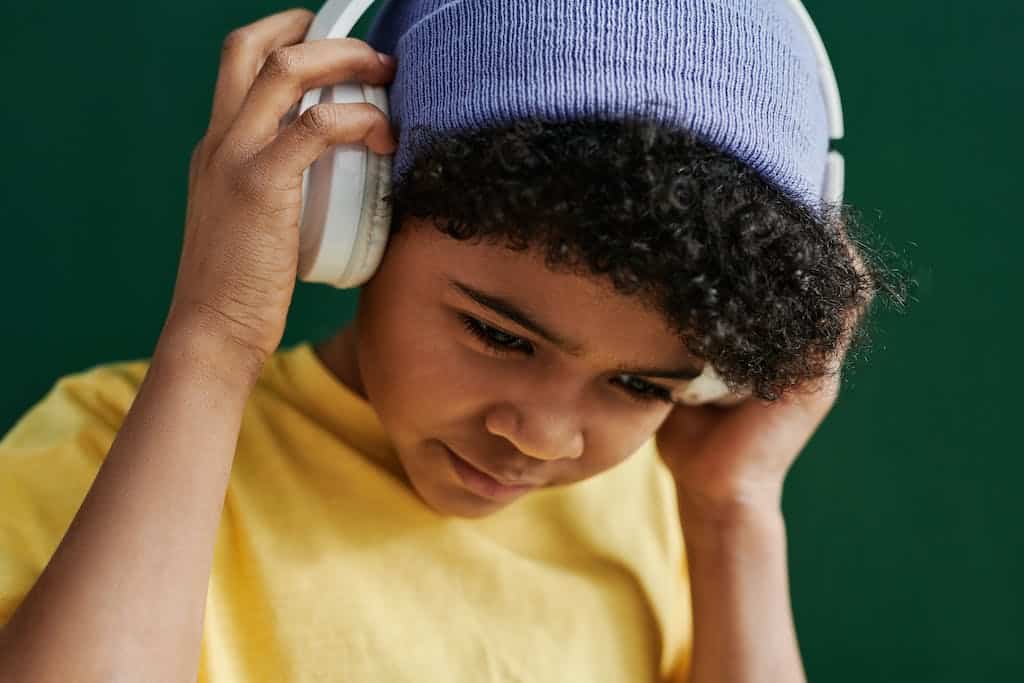
Whether narrated by the author or a professional voice artist, audiobooks offer a dynamic way to take in stories, providing an alternative to traditional reading. They can be streamed or downloaded, making them convenient for various situations, from commuting to relaxing at home.
Audiobooks not only serve as excellent vocabulary development activities but also act as powerful tools for beating the summer brain drain and fostering learning in disguise.
In the elementary classroom, audiobooks serve as versatile tools to enhance literacy skills and engage students in the world of literature.
9 Benefits of Using Audiobooks in the Classroom
1. Audiobooks boost listening skills.
Audiobooks transform the learning environment into an auditory adventure, capturing students’ attention through narrators’ voices, tones, and expressive nuances.
This attention-holding experience not only fosters a richer understanding of stories but also sharpens students’ ability to discern various sounds and tones within the story’s voice.

As students listen to different voices and tones expressed by the audiobook’s narrator, they get better at picturing and understanding what’s happening in the story. This adds an extra level of excitement to the stories they’re listening to as it brings them even more to life, and making stories even more fun and interesting.
Listening gets better with audiobooks because they make it fun and interesting!
2. Audiobooks enhance vocabulary.
Listening to audiobooks is a great classroom vocabulary activity.
When children listen to stories, they effortlessly grasp new words and comprehend their meanings within the context of the narrative. It goes beyond simply enjoying a story; it’s a fantastic method to help kids understand words more effectively and use them in an enjoyable manner.
As students engage with audiobooks during class time, they’re not just listening to stories. They’re also laying the foundation for a rich vocabulary, transforming language learning into an exciting journey filled with captivating words and immersive narratives.

This exposure to diverse vocabulary enhances their language skills, improves comprehension, and broadens their ability to express themselves effectively.
3. Audiobooks in the classroom nurture imagination.
Audiobooks are a fantastic tool for cultivating children’s imagination by immersing them in a captivating auditory storytelling experience.
Unlike traditional reading, where kids interpret words on a page, audiobooks offer a dynamic experience through skilled narration and some even include engaging sound effects. This not only transforms the narrative into a multi-sensory adventure but also encourages active engagement of their imagination.
Listen to this audiobook – the voices and tones are so good that you can easily picture the story in your head.
Through vivid descriptions and expressive voices, children are prompted to visualize characters, settings, and plot twists, creating mental images aligned with the narrator’s rendition. This process allows them to fully get lost in the storyline without the constraints of decoding text.
4. Reading comprehension improves with audiobooks.
Using audiobooks in the classroom can improve a students understanding of the story.
When kids listen to the narrator, they get a better picture of what’s happening in the story – like who the characters are and how everything unfolds.

Using audiobooks makes learning not just about hearing stories but also about thinking and understanding. Audiobooks help students become really good at understanding what they are hearing, making reading enjoyable.
5. Audiobooks promote multitasking and flexibility.
Audiobooks allow children to enjoy stories while engaging in other activities.
In my classroom, I loved when my students got creative – they’d draw, colour, or even knit while listening to audiobooks. Some would even tidy up or organize their space. Audiobooks are a great way to promote multitasking and flexibility.
This combination of activities helps exercise their imagination and cognitive skills at the same time. Surprisingly, multitasking often keeps students more focused. It’s like letting their minds dance through a story while their hands stay busy with something else!

Audiobooks offer kids the flexibility to focus and enjoy literature in a versatile way, expanding their reading experience.
6. Accessibility is ensured for all abilities with audiobooks.
Particularly beneficial for children facing reading difficulties or with visual impairments, audiobooks offer an inclusive and accessible approach to experiencing literature.
By leveraging auditory learning, students can engage with audiobooks and break down barriers that may hinder traditional reading methods.
This not only caters to diverse learning needs but also fosters a more inclusive educational environment, where all students can participate and enjoy the enriching world of literature.
Audiobooks ensure that every student has the opportunity to engage with and benefit from the power of stories.
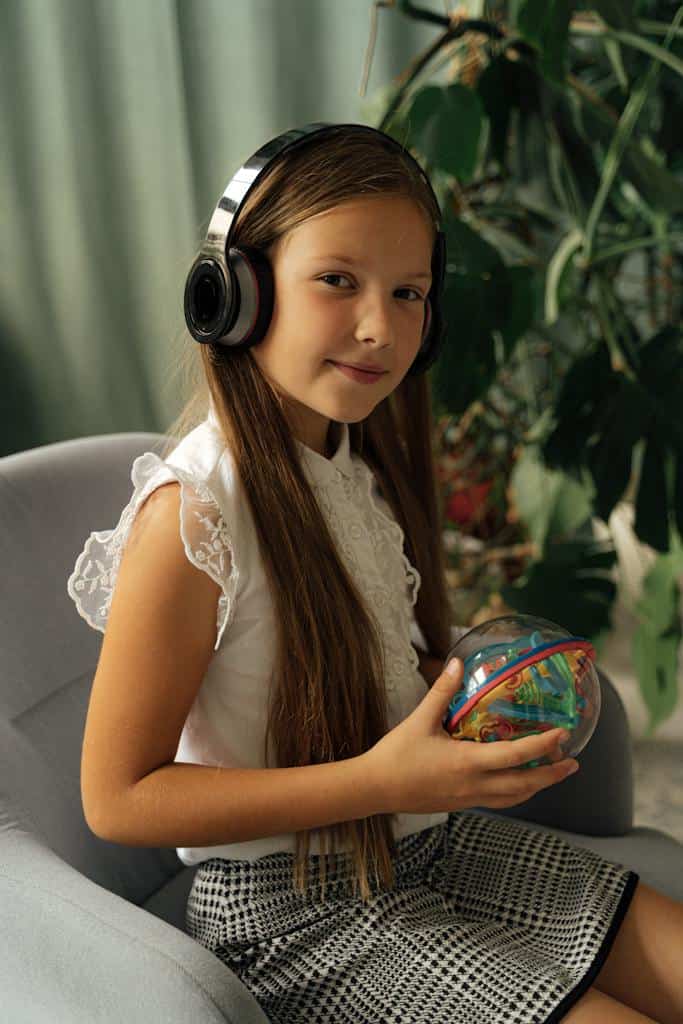
7. Enjoy a curated list for personalized reading.
With audiobooks, children can enjoy the benefits of a curated list of recommendations tailored to their interests.
As they engage with audiobook sites, like The Kindle Store, it learns their preferences and suggests a diverse range of captivating stories that align with their tastes.
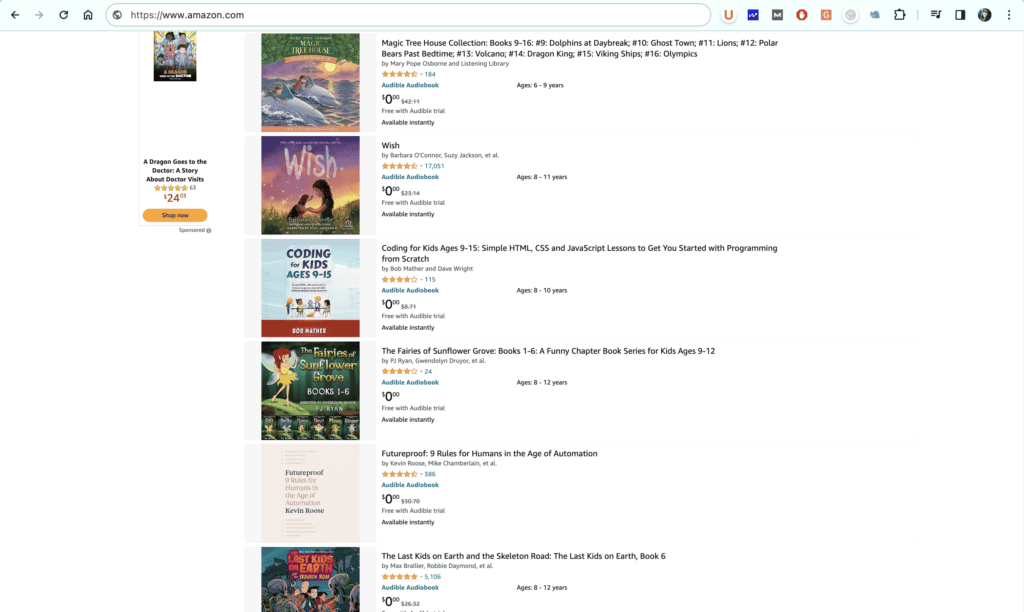
By offering content kids love through audiobooks, educators can enhance the learning journey for students, fostering a love for literature that is both enjoyable and developmentally enriching.
8. Age-appropriate material enriches student learning.
One of the significant benefits of audiobooks for kids is the ability to access age-appropriate content.
Audiobooks offer a wide range of stories, spanning various genres and themes, specifically tailored to different age groups.
This ensures that children are exposed to materials that align with their developmental stage and interests, providing them with a rich and engaging literary experience.

9. Students can follow along with audiobooks in the classroom.
Listening to an audiobook while simultaneously following along with the printed book provides children with a valuable learning opportunity.
Connecting spoken words to the written text becomes effortless, allowing them to grasp pronunciation, intonation, and sentence structure.
Explore the wealth of engaging read-along read-alouds available on platforms like YouTube, such as the one linked here. These videos offer a unique opportunity for readers to follow the story word by word, creating an immersive and interactive reading experience.
When they follow along, children are introduced to the rhythm and flow of language. As they synchronize the words they hear with the written text, they develop a sense of the natural cadence of storytelling. This rhythmical exposure contributes to their language development, aiding in the acquisition of vocabulary and language patterns.
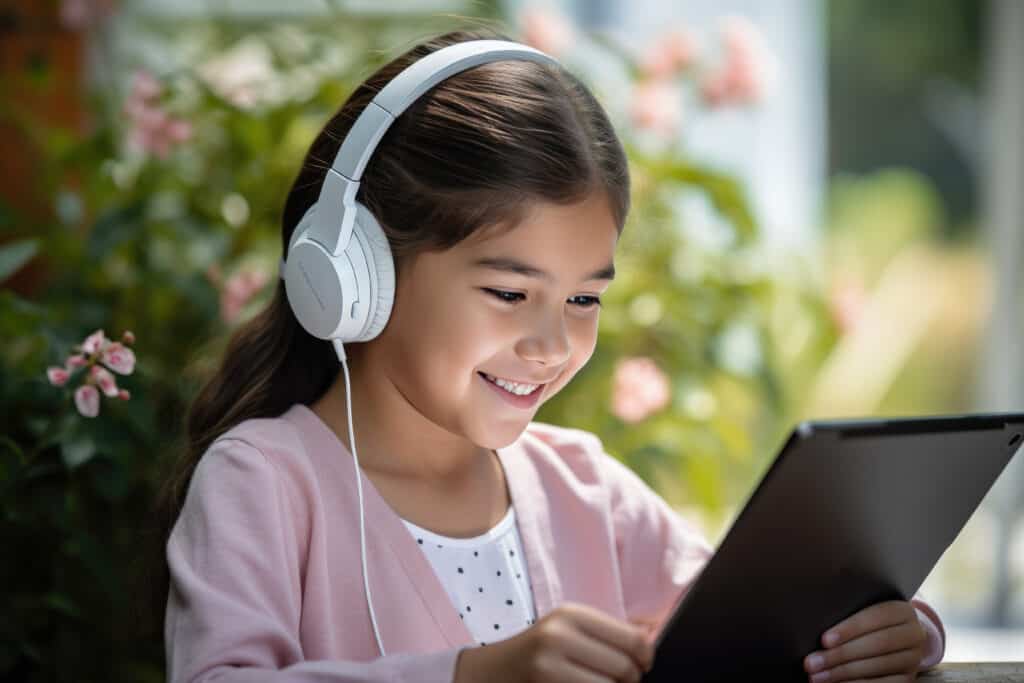
By listening to audiobooks in the classroom, at home, or even in the car, children not only enhance their linguistic skills but also cultivate a love for language and literature, laying the foundation for a lifelong appreciation of reading.
📚 Realted Articles
Your Guide to Starting a Family Book Club Now
This is One of the Best Picture Books to Teach Vocabulary
Book Report Ideas for 5th Grade that Spark Imagination
31 Summer Reading Activities for Your Elementary Students
Key Tips for Using Audiobooks in the Classroom
Now that you’re aware of the educational wonders of audiobooks, I thought I’d share some practical tips that seamlessly integrate this technology into the classroom, enhancing literacy skills and fostering a love for learning.
Create a listening area.
Set up a dedicated space in the classroom where students can comfortably listen to audiobooks. This area should be equipped with headphones, cozy seating, and possibly soft lighting to create a conducive environment for focused listening.

Select appropriate book titles.
Choose audiobooks that align with the curriculum, students’ interests, and reading levels. Ensure the content is engaging and suitable for classroom discussions to enhance comprehension.

Integrate audiobooks into your lessons.
Seamlessly incorporate audiobooks into lesson plans, using them to complement learning. Whether teaching parts of speech, exploring money concepts with books, or learning about the periodic table of elements, this integration reinforces key concepts, improves student interest, and offers a multifaceted approach to learning.
Encourage active listening.
Implement strategies to promote active listening, such as follow-up discussions, comprehension questions, or related activities. This ensures students remain engaged and derive maximum educational benefit from the audiobook experience.

Facilitate group discussions about the book.
Foster a collaborative learning environment by organizing group discussions around the audiobook content. Encourage students to share their thoughts, insights, and reflections, promoting critical thinking and communication skills.

Provide engaging follow-up activities.
Create supplementary activities or assignments that build on the audiobook experience. This could include writing assignments, creative projects, or research tasks that deepen students’ engagement with the material.
Incorporate audiobooks across all subjects.
Extend the use of audiobooks beyond language arts to subjects like history, science, or social studies. This interdisciplinary approach broadens students’ exposure to diverse topics and enhances their overall academic experience.

These simple yet effective tips will not only enhance their literacy skills but also cultivate a lifelong appreciation for the world of stories.
Audiobooks You Need for Your Elementary Classroom
Transform your elementary classroom into an auditory wonderland with these carefully selected audiobooks. These captivating stories cater to diverse interests, making learning more enjoyable and fostering a love for literature.
Audiobooks for grades 1-3
Audiobooks for grades 4-6
From the Mixed-up files of Mrs. Basil E. Frankweiler
Hidden Figures Young Readers’ Edition
Audiobooks for grade 6+
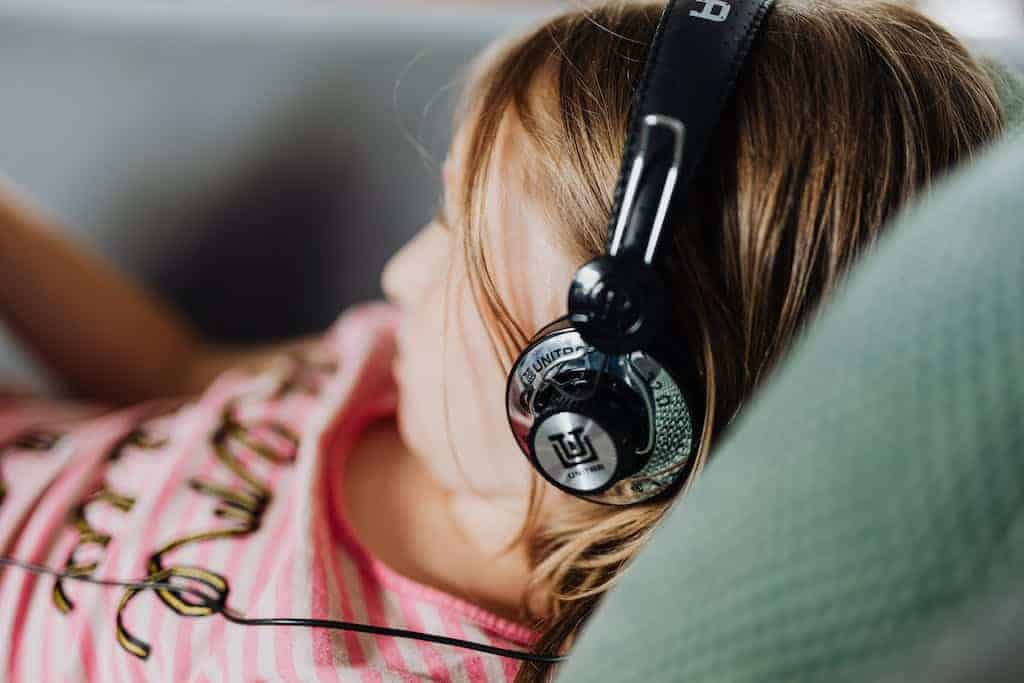
The Wrap-Up: Audiobooks in the Classroom
Incorporating audiobooks into your classroom is a dynamic and inclusive approach to literacy education. By fostering listening skills, comprehension, and a love for storytelling, you’re not just teaching students to read; you’re cultivating a lifelong passion for the written word.
As you explore with audiobooks, we anticipate that your students will find joy in learning through their captivating spoken tales.
Happy listening!
Save this blog for later by pinning it now!
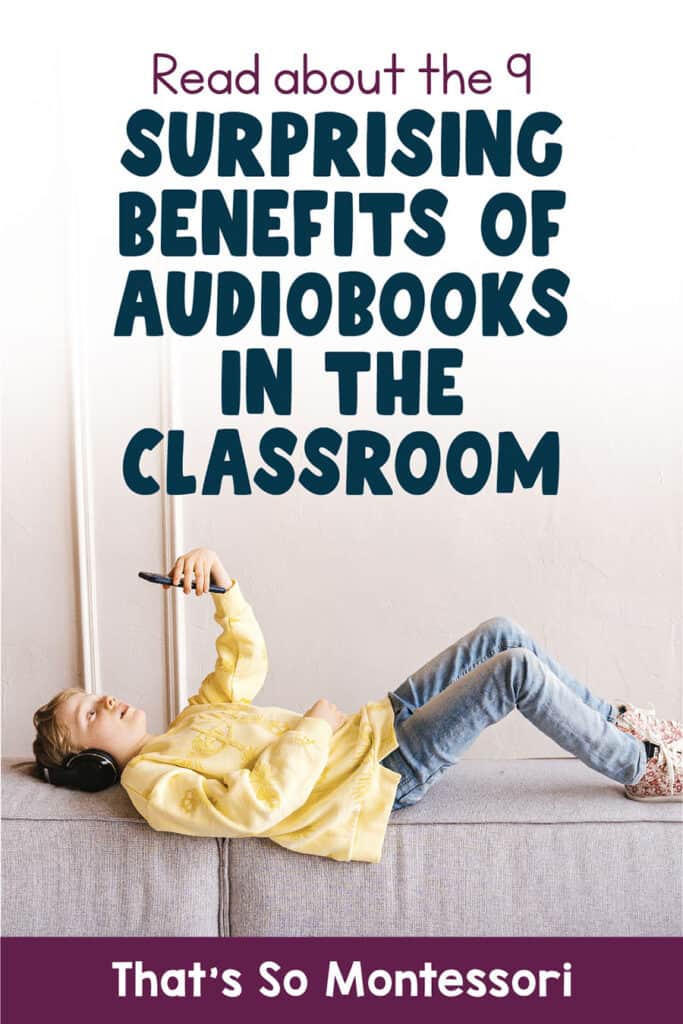
Encourage reading with these fun activities:
Reading Challenge: 100 Places to Read Checklist
Reading BINGO Cards
Carl the Cantankerous Cat Digital Picture Book + Printable Activity Pack
Printable Rebus Puzzle Guide & Cards
Parts of Speech Game: Printable Activity for Kids
Roll A Story Dice Game
Math Jokes for Kids and Teachers
Periodic Table of Elements Digital Lessons
Word of the Week


